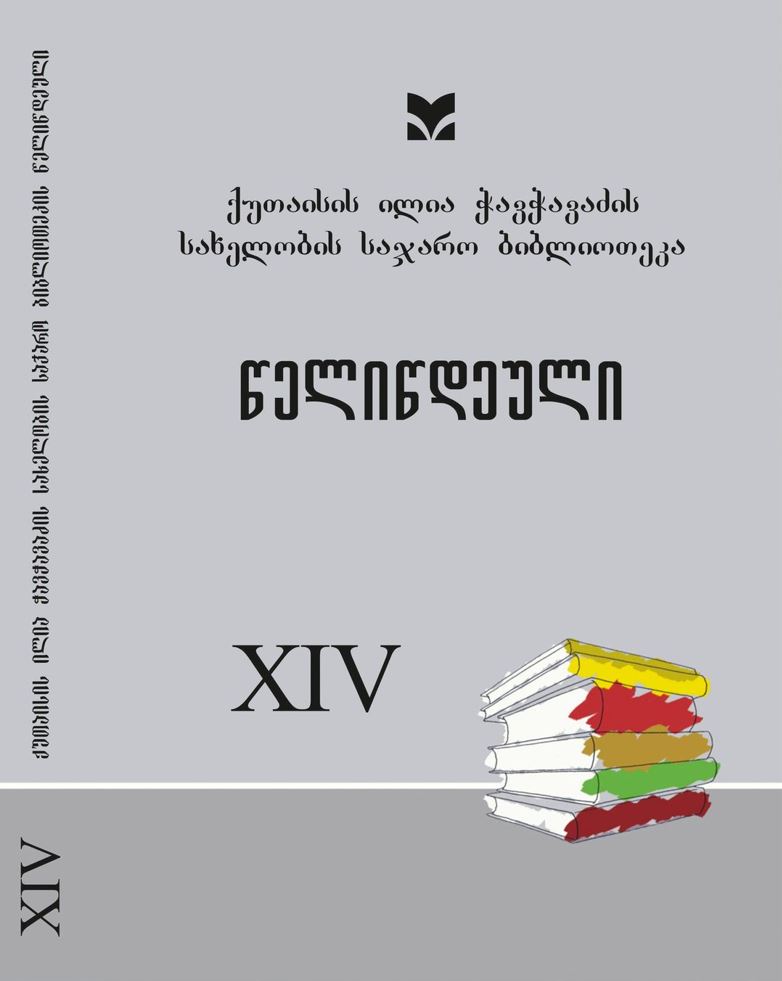The Written Legacy of the Abkhazian Princely House in the 19th Century: A Study of Documents and Epistolary Heritage
DOI:
https://doi.org/10.61491/yk.14.2022.6969Keywords:
Written heritage of Abkhazia in the 19th century, Epistolary heritage of the Sharvashidzes, Epigraphic monuments of AbkhaziaAbstract
The exploration and reevaluation of the written legacy of the princely house of Abkhazia in the 19th century hold considerable importance within the GeorgianAbkhazian scientific historiographical discourse. During this era, the primary language of Abkhazian culture and education was Georgian, a fact substantiated by historical documents and artifacts. Of particular interest are the official documents, epistolary heritage, and epigraphic monuments associated with the Sharvashidze family, representatives of the Abkhaz princely house. These three groups of historical sources, which encompass official documents, family correspondence, political letters, and various written materials, are predominantly written in Georgian.
This paper focuses on the study and analysis of official historical documents attributed to Kelesh-Bey Sharvashidze, Giorgi (Safar-Bey) Sharvashidze, and Mikheil Sharvashidze. The examination emphasizes the language of the documents, writing styles, textual editing practices, signatures, and other relevant aspects. Notably, these documents adhere to the diplomatic norms of medieval Georgia, employing various diplomatic terms developed in the Georgian kingdoms of the late Middle Ages. They also feature specific appellations characteristic of the Georgian literary language, traditional forms of prayer, and other linguistic elements. It is evident that these documents were not authored by individuals or groups with an „other“ identity; instead, the Georgian language serves as the language of their inner world and their sense of self, evident in every sentence.
The epistolary heritage, preserved and published in the Mikheil Sharvashidze Foundation at the Nation-al Archives of Georgia, can be categorized into three groups: 1) Georgian-language letters with Russian trans-lations provided by official authorities, 2) Russian-language letters sent to the author in Georgian and subsequently translated from Georgian to Russian (though the originals are not extant), and 3) letters composed by the author in Russian and sent to the addressees. Notably, the
third group comprises the fewest number of letters.
The third group of epigraphic material within the written heritage of the Sharvashidze feudal house en-compasses construction and memorial inscriptions, primarily in the form of epitaphs. Grave decoration and the carving of epitaphs are integral aspects of the culture of numerous countries, directly linked to societal traditions, attitudes towards the deceased, and death in general. As a manifestation of philosophical aesthetics concerning life and death, epitaphs hold distinct value as artifacts representing the mentality and cultural iden-tity of individuals within their traditional context. The language, script, content, and attitudes toward death reflected in tombstone epitaphs provide clear indications of diverse cultures and identities. The epitaphs of the last prince of Abkhazia, his wife, and Abkhaz dignitaries serve as significant guardians of cultural identity within our symbolism-laden world.
The examined material confirms that the language of the historical documents, letters, and inscriptions, as well as how they are composed and the traditions observed in writing epitaphs, is unequivocally Georgian. For the authors of these texts, Georgian serves not only as a language of culture but also as the language of their inner world, allowing them to convey their thoughts and feelings metaphorically. These materials unin-tentionally manifest collective historical memory and cultural identity, solidifying the Abkhaz princely house’s written monuments as a treasure trove of inherited collective knowledge preserved in the Georgian language, employing Georgian script and diverse traditional methods of transmission and embellishment.




